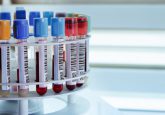New supersensitive nanodevice could detect early cancers
Lunchbox-sized unit may soon offer extremely early disease diagnosis.
A nanodevice, currently being developed in a collaboration between the University of Alabama in Huntsville (AL, US) and The Joint School of Nanoscience and Nanoengineering (NC, US), offers the potential for extremely early detection of cancers and other diseases. The nanodevice at the core of the diagnostic unit holds promise for finding cancer at very early stages, potentially even when it is little more than a cluster of cells.
Yongbin Lin, a research scientist at the University of Alabama in Huntsville’s Nano and Micro Devices Center, has been working on the nanodevice at the core of the diagnostic unit. Lin stated, “In the future, we will do an integration of the system with everything inside a box. If we get funding support, I think that within three to five years it may be realized.” The integration of the system is being approached in collaboration with Jianjun Wei, an associate professor at the Joint School of Nanoscience and Nanoengineering, and may offer the potential to discover cancer at its earliest stages, when it is easier to treat.
One of the proposed tests would detect tiny quantities of interleukin-6 in the blood. Interleukin-6 is secreted by the body’s immune system; heightened levels in the blood may also be an indicator of cancer, or of other medical conditions. The researchers are also developing a test for prostate specific antigen, an indicator of prostate cancer. However, as Lin mentioned, the device could potentially be calibrated to test for any protein antigen biomarker.
The device, once packaged, is expected to be useful for providing quick test results without the need for a testing laboratory. It therefore has the potential to be an important invention for countries with fewer medical facilities or lower economic stability. It also has scope for reliable, early-stage infectious disease testing, and could eventually be a useful tool during disease outbreaks such as the current Ebola virus epidemic in West Africa, if a virus-specific antigen could be found and programmed into the device.
The nanodevice at the center of the design is 125 µmin diameter with gold nanodots on a 4 µm fiber core. The nanoprobe is so tiny, it requires an electron microscope for assembly, after which the probe is coated with a biochemical link specific to the antibodies for the test being carried out.
While the device is still in the research and development stage, advances such as this may provide earlier disease detection in the future, prior to any serious harm to quality of life.
Sources: Supersensitive nanodevice can detect extremely early cancers; Sanders M, Lin Yongbin, Wei J, Bono T, Lindquist RG. An enhanced LSPR fiber-optic nanoprobe for ultrasensitive detection of protein biomarkers. Biosensors and Bioelectronics, 61, 95–101, doi: 10.1016/j.bios.2014.05.009 (2014) (Epub ahead of print).




